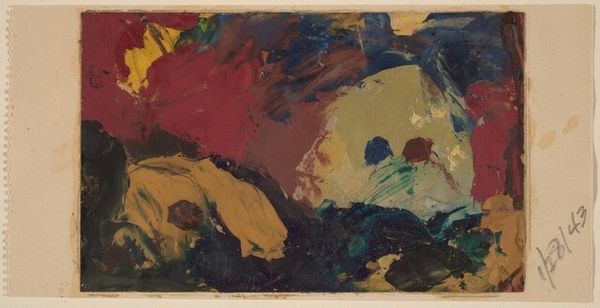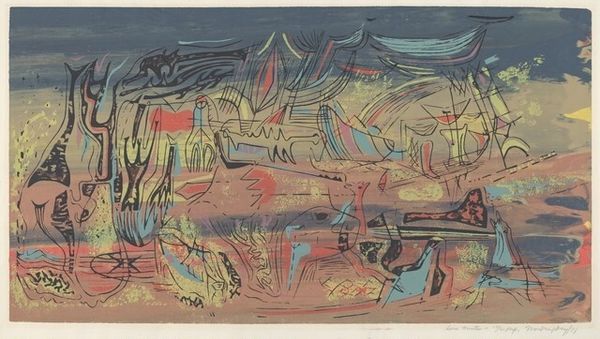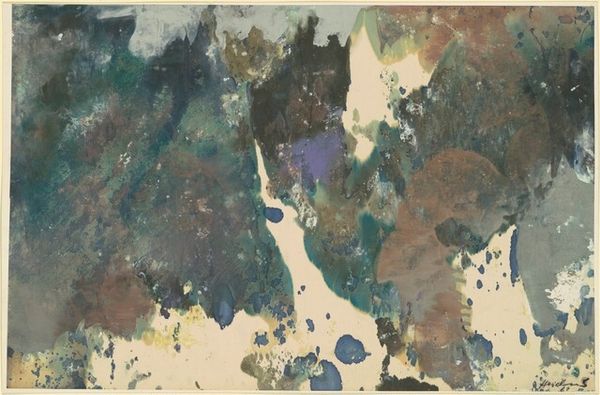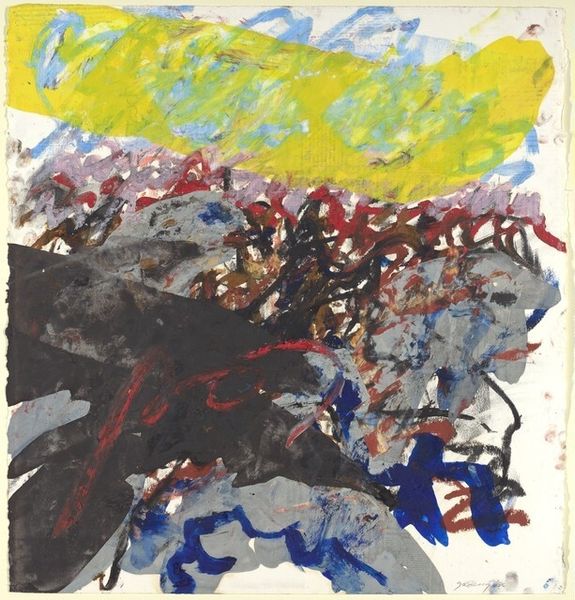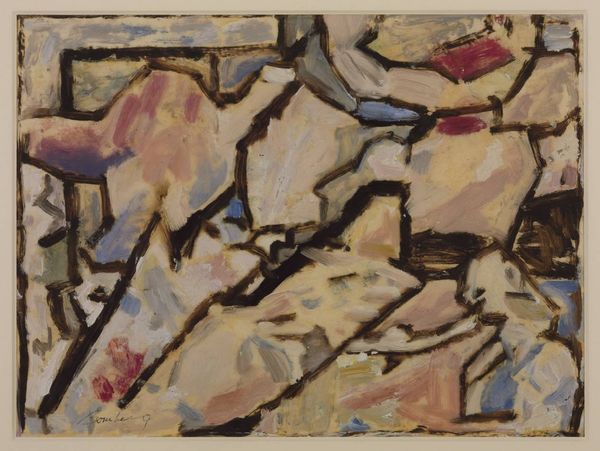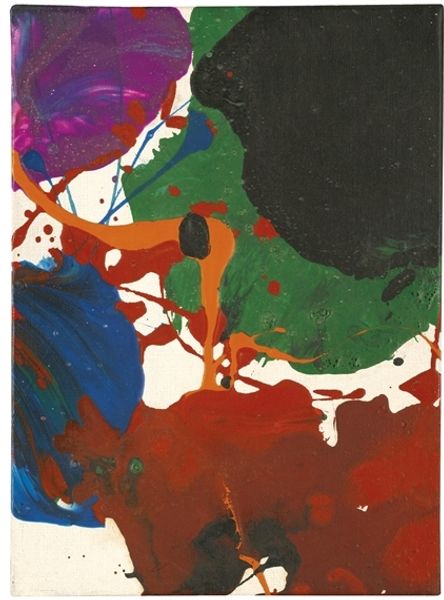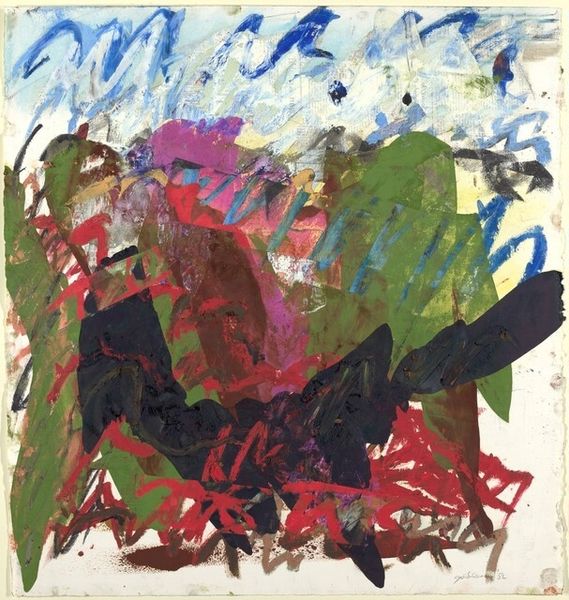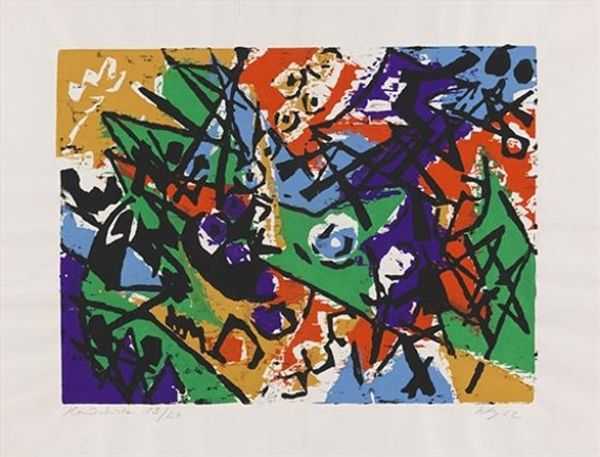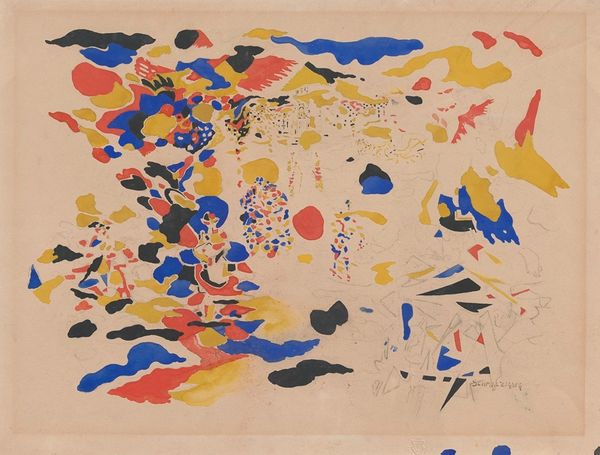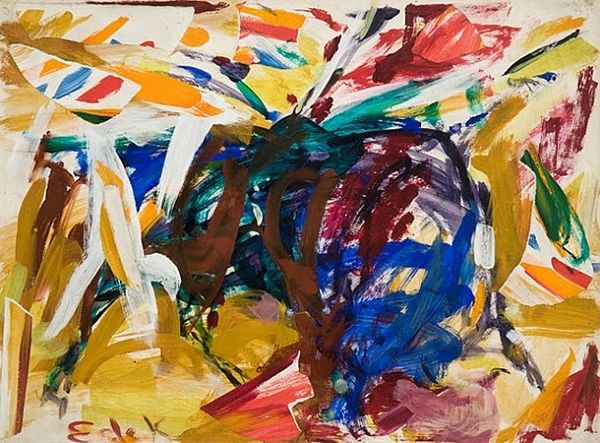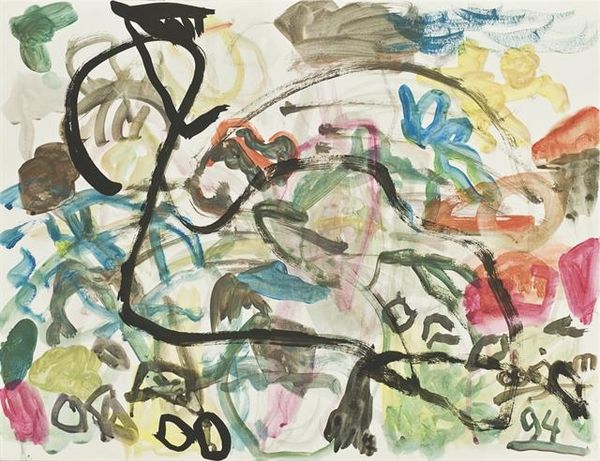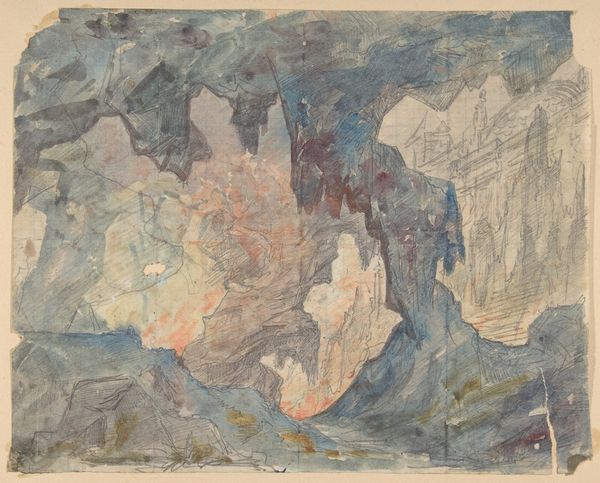
#
abstract-expressionism
#
abstract expressionism
# print
#
landscape
#
geometric
Dimensions: image: 229 x 305 mm sheet: 330 x 403 mm
Copyright: National Gallery of Art: CC0 1.0
Curator: Welcome! We're standing before "Equinox," a 1942 print by Reuben Tam. Notice how he's captured the landscape in a very geometric and evocative manner. Editor: My first thought? Turmoil. The jagged peaks and clashing colors—reds, blues, and that oppressive black—it feels like a landscape caught in some kind of emotional upheaval. Curator: I see your point, and indeed, the dynamism in this piece stems largely from Tam's deployment of angular forms. Consider how these sharp, fragmented elements build upon one another. They create a kind of visual tension that animates the landscape itself. Editor: I'd agree with this notion of tension. Let's not forget this piece was created during the Second World War. With Tam’s Japanese heritage, what kind of pressures might he have felt as a person experiencing racial hostility living in America at that time? Curator: It’s a valid reading to interpret this piece against that backdrop of war. And yet I can't help but observe how these colors create structural divisions that, however tumultuous, feel carefully balanced. The darker hues provide a sort of anchor to the overall design. Editor: Yes, the colors are intentional, though, it feels so deeply embedded within the identity of an Asian American navigating cultural prejudice and wartime anxieties, anxieties mirrored by a landscape depicted under immense strain. It certainly offers a powerful lens to consider the complex psychological undercurrents influencing abstract expressionism at the time. Curator: Well, no doubt the artist here asks us to contend with nature both as structure and as an emotional territory—one of disruption and an evolving relationship between form and identity. Editor: Ultimately, Tam's 'Equinox’ doesn't just present us with an image, but beckons us into the turbulent heart of its era and the experience of the artist as it relates to place and feeling.
Comments
No comments
Be the first to comment and join the conversation on the ultimate creative platform.

